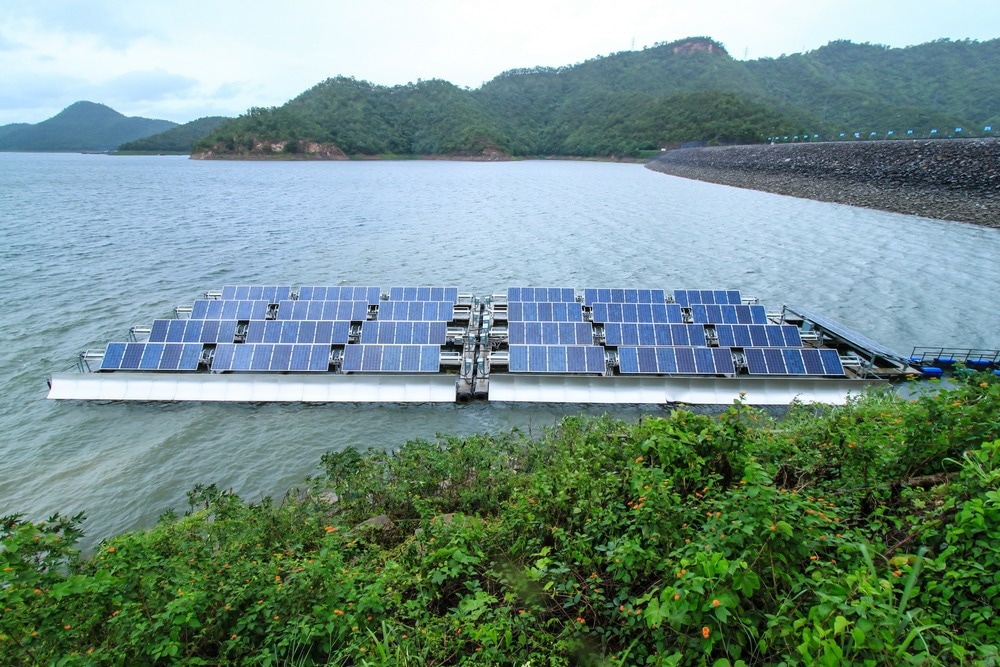
Image Credit: PreechaB/Shutterstock.com
Environmental Impact of Solar Panels
Aside from the pressure of finding enough space for solar panels, Nature journal identifies that there are a number of unknowns associated with social, technical and economic environmental impacts of floatovoltacis.
Research is needed to fill gaps in knowledge, preferably prior to the major roll-out of this technology, which has the potential for unforeseen complications.
Deserts have been promoted as ideal locations for solar panels because they have plenty of sunshine and less land-use competition. Yet, modeling of the Sahara reveals large areas covered in dark solar panels, alters local temperatures and disrupts global airflow. This can cause droughts in the Amazon or sea-ice loss in the Arctic. It is also difficult to transfer energy from remote desert regions to the areas it is needed.
Agrivoltaic systems, where solar panels are distributed across agricultural fields, can adversely affect food production.
Other regions such as rooftops, car parks and highways have the potential to become utilized for solar energy but have limited potential because there are not enough of them to satisfy global energy demands.
Floatovoltaic Advantages
Solar panels placed on water keeps them cool, which makes them around 5 percent more efficient than land-based ones.
Multiple panel arrays shield the surface from the sun, potentially reducing evaporation, which in turn provides more water for hydropower and irrigation.
Hydropower reservoirs are already designed for distributing electricity to where it is needed, so if paired with solar energy, the infrastructure is already in place, helping to reduce costs. The power generated could also potentially be stored in reservoirs when sunlight is high to use later when sunlight is weak.
Hydropower plants can be carbon-intensive, with high emissions. Methane can be released from decaying submerged plant matter, even emitting as much carbon as fossil-fuel plants.
Solar panels placed over 2 percent of a reservoir’s surface could potentially double electricity production, offsetting a reservoir’s carbon emissions.
Obstacles to Increasing Floatovoltaic Production
Floatovoltaics are currently marginally more expensive than land-based ones, but the market is rapidly expanding, with lots of projects underway. One in Batam, Indonesia, aims to produce 2.2 GW through solar panels over 16 km2 of water, which will double global floatovoltaic production.
A cautionary approach is needed, however, because of unintended or unforeseen consequences.
Wind turbines have harmed birds and bats, through death or interfering with navigation. Noise pollution from offshore turbines affects marine life and interferes with whale migration and the fishing industry.
Hydropower reservoirs have largely considerable negative socio-environmental impacts for both wildlife and humans, including water supply control, habitat and land loss, ecosystem destruction, fish migrations, and other hazards.
In some areas, they have provided benefits such as flood control, bird habitat, fisheries and recreation.
Public opposition to floatovoltaics could increase if potential issues are not researched thoroughly beforehand, which, in turn, will put private investors off and potentially harm the switch to decarbonizing economies.
Environmental and Social Impacts of Photovoltaics
The environmental impacts must be assessed carefully before embarking on massive photovoltaic installations.
Climate change is increasing water temperature in seas, rivers and lakes, which in turn creates harmful algal blooms.
Scientists have modeled whether covering water in solar panels has a beneficial effect in reducing algal blooms and discovered they can, but a lot more research is needed. Physical, chemical and biological reactions, wildlife, water ecosystems and drinking water can all potentially be affected.
Organisms that rely on photosynthesis to survive, such as plants and phytoplankton may be affected. Reduced sunlight helps restrict algae blooms from increasing, but reduced oxygen could have a detrimental effect on fish.
Large-scale field studies are required to evaluate ecosystem responses.
Floatovoltaic projects could potentially interfere with livelihoods such as fisheries, and impact people that are heavily reliant on fish for consumption and export.
Sardines would be hard to harvest under large floatovoltaic installations and this might have a knock-on effect on associated food webs and fish export industries.
Scientists need to work out a level of acceptability that may appease the public.
There are also technical issues to address. Bird feces and microbial biofilms is likely to be more of a problem over water than land, and reduce photovoltaic output.
The formation of ice and the cost of breaking it is likely to increase operational and maintenance costs, as has happened in Heilongjiang province in China.
Tropical cyclones and high winds could cause damage. In Japan, panels piled up and a fire broke out on the Yamakura Dam.
Drought can reduce water levels of water reservoirs, and the need for drinking water and agriculture is likely to outweigh the necessity for stable water levels for floatovoltaics. Therefore, engineering solutions and cost evaluations are required.
Transparency is likely to boost investor confidence, but researchers need to model costs given the variability across different sites, and also publish outcomes for scrutiny when large projects go live.
Science and decision-makers need to work together to ensure that as and when floatovoltaic projects are developed throughout the world, they are both equitable and sustainable.